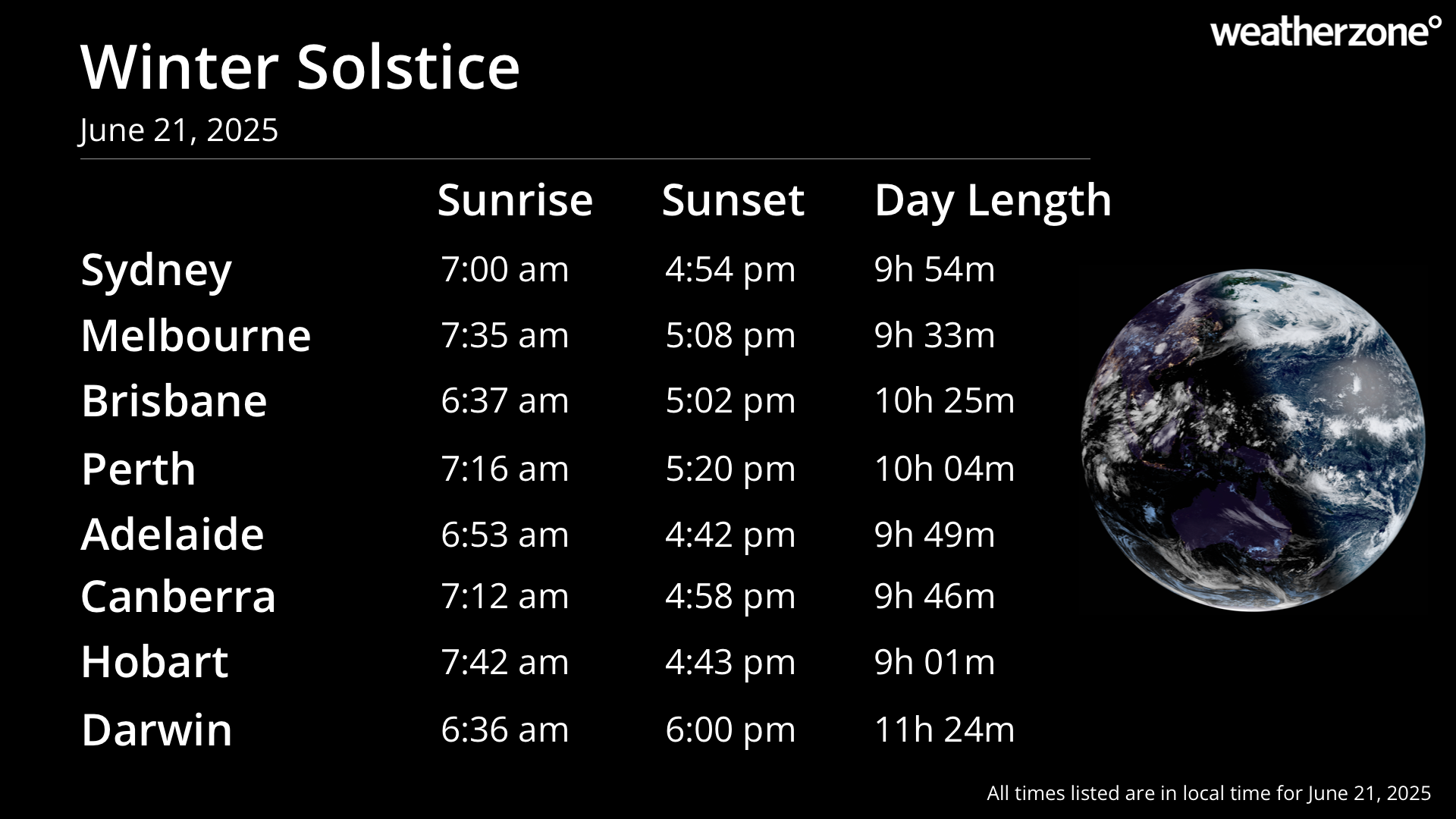Winter solstice this weekend – here's what it means for Australia
The Southern Hemisphere’s winter solstice will occur this weekend, marking Australia's shortest day of the year based on sunlight hours.
This year’s winter solstice for the Southern Hemisphere will occur at 12:42pm AEST on Saturday, June 21.
On the date of the winter solstice, the Southern Hemisphere will reach its furthest tilt or inclination away from the Sun. This will cause Saturday to have the year’s shortest amount of time between sunrise and sunset for everywhere south of the equator (excluding the polar region to the south of the Antarctic Circle, which will remain dark all day).

Image: The orientation of Earth relative to the Sun on the date of the winter solstice.
The solstice and the seasons
The winter solstice marks a tipping point in the Sun-Earth orientation that is associated with a seasonal transition on Earth.
Prior to the winter solstice, days have been progressively getting shorter for the past six months as the Southern Hemisphere gradually become more inclined away from the Sun. This trend of shortening days and lengthening nights is what causes the transition from summer to winter.
Following the winter solstice, the Southern Hemisphere gradually becomes more inclined towards the Sun. This trend causes days to get longer and nights to become shorter for the next six months, driving the slow transition from winter back to summer.

Image: Sunrise, sunset and day length for Australia’s capital cities on the winter solstice in 2025.
Some countries base their seasons off the dates of the solstices and equinoxes, while others use calendar months to define season dates.
In Australia, the coldest time of the year typically occurs a few weeks after the winter solstice due to the insulating effect of the oceans surrounding the continent. This makes it fitting to use the three-month period of June, July and August to define winter for most of Australia.

Image: You can check the times for 'first light' and 'last light' in the Daily Forecast for your area on the Weatherzone app.